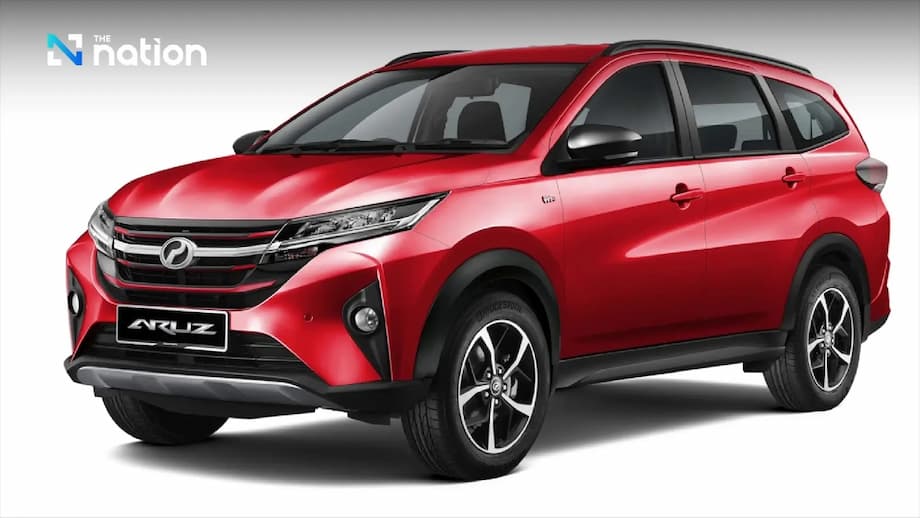Malaysia Surpasses Indonesia: A New Era for ASEAN’s Car Market
For the first time in history, Malaysia has overtaken Indonesia to become the leading car market in the Association of Southeast Asian Nations (ASEAN). This milestone marks a significant shift in the region’s automotive landscape, reflecting broader economic, technological, and competitive changes that are reshaping Southeast Asia’s car industry. While Malaysia’s rise is driven by robust domestic brands and surging electric vehicle (EV) adoption, Indonesia faces economic headwinds, and Thailand is navigating both recovery and the retreat of Japanese manufacturers. Meanwhile, Vietnam is rapidly climbing the ranks, poised to overtake the Philippines as the fourth-largest market in the region.
- Malaysia Surpasses Indonesia: A New Era for ASEAN’s Car Market
- What Drove Malaysia to the Top?
- Indonesia: Economic Pressures and a Shrinking Middle Class
- Thailand: Recovery, EV Growth, and Japanese Brands Retreat
- Vietnam: The Rising Star of ASEAN’s Car Market
- Chinese Automakers and the EV Revolution
- Supply Chain Shifts and the Future of ASEAN’s Automotive Industry
- Broader Economic and Policy Context
- In Summary
This article explores the factors behind Malaysia’s ascent, the challenges facing Indonesia and Thailand, the rise of Vietnam, and the broader implications for the ASEAN automotive sector as it enters a new era of competition, innovation, and transformation.
What Drove Malaysia to the Top?
Malaysia’s automotive market has long been dominated by its national brands, Perodua and Proton, which together accounted for 63% of car sales in the first half of 2025. These brands have benefited from indirect government support, strategic partnerships with global players (such as Daihatsu for Perodua and Geely for Proton), and a deep understanding of local consumer preferences. Popular models like the Perodua Alza and Proton Saga continue to top sales charts, alongside international favorites like the Toyota Vios and Honda City.
But the real game-changer has been the explosive growth in electric and hybrid vehicles. In the first half of 2025, EV sales in Malaysia surged by 91% year-on-year to 12,733 units, while hybrid sales grew 12% to 17,480 units. This surge is not only a testament to changing consumer preferences but also to government incentives, improved charging infrastructure, and the entry of competitive Chinese EV brands.
Chinese automakers, led by BYD, have rapidly gained ground in Malaysia’s EV market. In the first half of 2025, Chinese EVs accounted for nearly 50% of all new electric cars registered, with BYD alone delivering 5,434 units, outpacing Proton’s 4,043 and Tesla’s 2,399. The affordability and reliability of Chinese models like the Neta V, BYD Dolphin, and MG ZS EV have made them attractive to Malaysian consumers, especially as fuel subsidies are phased out and petrol prices rise.
Despite these gains, EVs still represent a small fraction (about 4.3%) of Malaysia’s total vehicle registrations. However, the government’s ambitious targets—15% of new car sales to be EVs by 2030 and 80% by 2050—signal a clear direction for the future.
Indonesia: Economic Pressures and a Shrinking Middle Class
Indonesia, with its population of over 280 million, has traditionally been ASEAN’s largest car market. However, in 2024 and into 2025, the country’s automotive sector has faced significant challenges. Car sales in June 2025 dropped by 21%, the first major decline since March 2024. This slump is attributed to weakening purchasing power among the middle class, stricter consumer credit conditions, and a contraction in the middle class itself—from 21.4% of the population in 2019 to just 17.1% in 2024.
Economists from Danamon Bank have pointed out that the decline in car sales is closely linked to these economic pressures. Tighter auto loan approvals, high household debt, and a VAT hike have further dampened demand. While Indonesia remains a key market, its outlook for 2025 is cautious, with only a slight projected increase in light vehicle sales and persistent downside risks.
Despite these challenges, Indonesia is positioning itself as a future EV hub. Major investments, such as the Indonesia Battery Integration Project, aim to build a complete EV battery supply chain—from nickel mining to battery manufacturing and recycling. Chinese automakers like Geely and Wuling are expanding their presence, and the government is offering incentives to attract more investment in EV production.
Thailand: Recovery, EV Growth, and Japanese Brands Retreat
Thailand has long been known as the “Detroit of Asia,” serving as a major automotive manufacturing hub for global brands, especially Japanese automakers. In 2023, Thailand produced 2.55 million vehicles, with projections to reach nearly 3 million by 2028. The sector contributes over 10% of the country’s GDP and supports millions of jobs, both directly and indirectly.
However, the Thai car market has faced headwinds. In 2024, sales dropped by 16%, and the first quarter of 2025 saw a 7% year-on-year decline. The main culprits: high household debt, tighter auto loan approvals, and economic uncertainty. Yet, there are signs of recovery. In the second quarter of 2025, car sales increased by 3.6%, marking the first quarterly rise since Q3 2022. This rebound is largely driven by the rapid adoption of electric vehicles, with EV sales jumping 33% in the first half of 2025 to 69,005 units—23% of total car sales.
Thailand’s government is aggressively promoting EV production, offering subsidies, tax reductions, and incentives for local manufacturing. The goal is for 30% of vehicle production to be electric by 2030. Chinese brands like BYD and MG are now among the top 10 best-selling brands in Thailand, challenging the long-standing dominance of Japanese automakers.
Japanese brands, meanwhile, are consolidating or scaling back their operations. Honda is closing its Ayutthaya plant, Suzuki will shut its Thai assembly plant by the end of 2025, and Nissan is restructuring, preparing to close one of its two Thai plants. These moves reflect broader global shifts, including the impact of new US tariffs and intensifying competition from Chinese and other Asian automakers.
Thailand’s Investment Appeal Remains Strong
Despite these challenges, Thailand remains attractive for foreign investors, thanks to its robust supplier network, high localization rates, and government incentives. The country is investing heavily in EV-ready infrastructure, R&D centers, and special economic zones like the Eastern Economic Corridor. These efforts are designed to maintain Thailand’s status as a regional automotive powerhouse, even as the industry undergoes profound transformation.
Vietnam: The Rising Star of ASEAN’s Car Market
Vietnam is rapidly emerging as a key player in the ASEAN automotive landscape. In the first half of 2025, Vietnam’s GDP grew by 7.52%—the highest in 15 years—supported by a rising middle class and strong automobile sales. Car sales in the second quarter of 2025 rose by 18% to 90,772 units, and the country is on track to surpass the Philippines as the fourth-largest car market in ASEAN.
Vietnam’s growth is fueled by several factors:
- A booming middle class with increasing purchasing power
- Strong government support for EVs, including registration fee waivers for battery electric vehicles until 2027
- The success of VinFast, the national EV manufacturer, which sold 87,000 electric vehicles domestically in 2024
- A surge in hybrid and commercial vehicle sales, driven by infrastructure spending and new model launches
Vietnam’s car market is also benefiting from foreign investment, export growth, and a favorable policy environment. However, ongoing tariff negotiations and global trade tensions could pose risks to future growth.
Chinese Automakers and the EV Revolution
One of the most disruptive trends in ASEAN’s automotive sector is the rapid rise of Chinese automakers, especially in the EV segment. Brands like BYD, MG, Wuling, and Chery are investing heavily in local manufacturing, supply chains, and R&D across Malaysia, Thailand, Indonesia, and Vietnam. Their affordable, innovative models are reshaping consumer preferences and intensifying competition with Japanese and Western brands.
In Malaysia, Chinese EVs now account for nearly half of all new electric car registrations. In Thailand, BYD and MG are among the top 10 brands, and in Singapore, BYD was the top-selling EV brand in 2024. Indonesia is also seeing increased investment from Chinese automakers, with Wuling and BYD each securing 4% of the market.
These developments are transforming ASEAN into a key launchpad for global EV ambitions, with the region serving both as a major market and a supply chain hub for batteries, components, and finished vehicles.
Supply Chain Shifts and the Future of ASEAN’s Automotive Industry
The rise of EVs and the entry of new players are driving significant changes in supply chain logistics across Southeast Asia. Automakers are localizing production, establishing battery and component plants, and adapting to new trade flows within the region. Governments are investing in EV-ready infrastructure, including charging stations, port electrification, and dedicated zones for battery handling and recycling.
Logistics providers are under pressure to upgrade digital capabilities, manage complex multimodal transport, and ensure supply chain resilience amid uneven demand and policy uncertainties. The evolving mix of EVs, hybrids, and internal combustion engine vehicles adds further complexity to production and distribution networks.
Despite the challenges, ASEAN’s role as a competitive production base and emerging EV export hub is only expected to grow. The region’s automotive market is forecast to recover modestly in 2025, with total light vehicle sales projected at 3.19 million units. However, downside risks remain, including global economic uncertainty, protectionist trade policies, and the need for continued investment in infrastructure and innovation.
Broader Economic and Policy Context
The shifts in ASEAN’s automotive market are occurring against a backdrop of broader economic and policy changes. Trade tensions, new tariffs (such as those imposed by the US), and policy uncertainties are affecting investment patterns and growth expectations across the region. While Vietnam and the Philippines are showing resilience, Indonesia and Thailand are recalibrating their targets and adopting more accommodative monetary policies to support recovery.
Foreign direct investment trends are mixed, with a surge in EV-related projects but a decline in overall project numbers due to global uncertainties. Governments are responding with incentives, infrastructure upgrades, and strategic alliances to maintain competitiveness and attract new investment.
In Summary
- Malaysia has overtaken Indonesia as ASEAN’s top car market, driven by strong domestic brands and surging EV adoption.
- Indonesia faces economic pressures, a shrinking middle class, and tighter credit, but is investing in EV supply chains to regain momentum.
- Thailand is recovering, with EV sales driving growth, but Japanese automakers are retreating amid rising competition from Chinese brands.
- Vietnam is the region’s rising star, with robust economic growth, a booming car market, and strong government support for EVs.
- Chinese automakers are rapidly gaining market share across ASEAN, transforming the competitive landscape and supply chains.
- ASEAN’s automotive industry is navigating a period of profound transformation, with modest recovery expected in 2025 but significant challenges and opportunities ahead.












